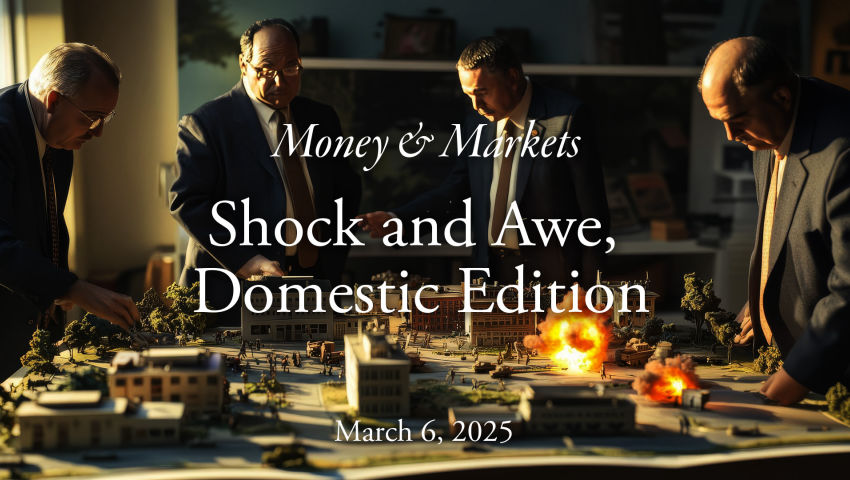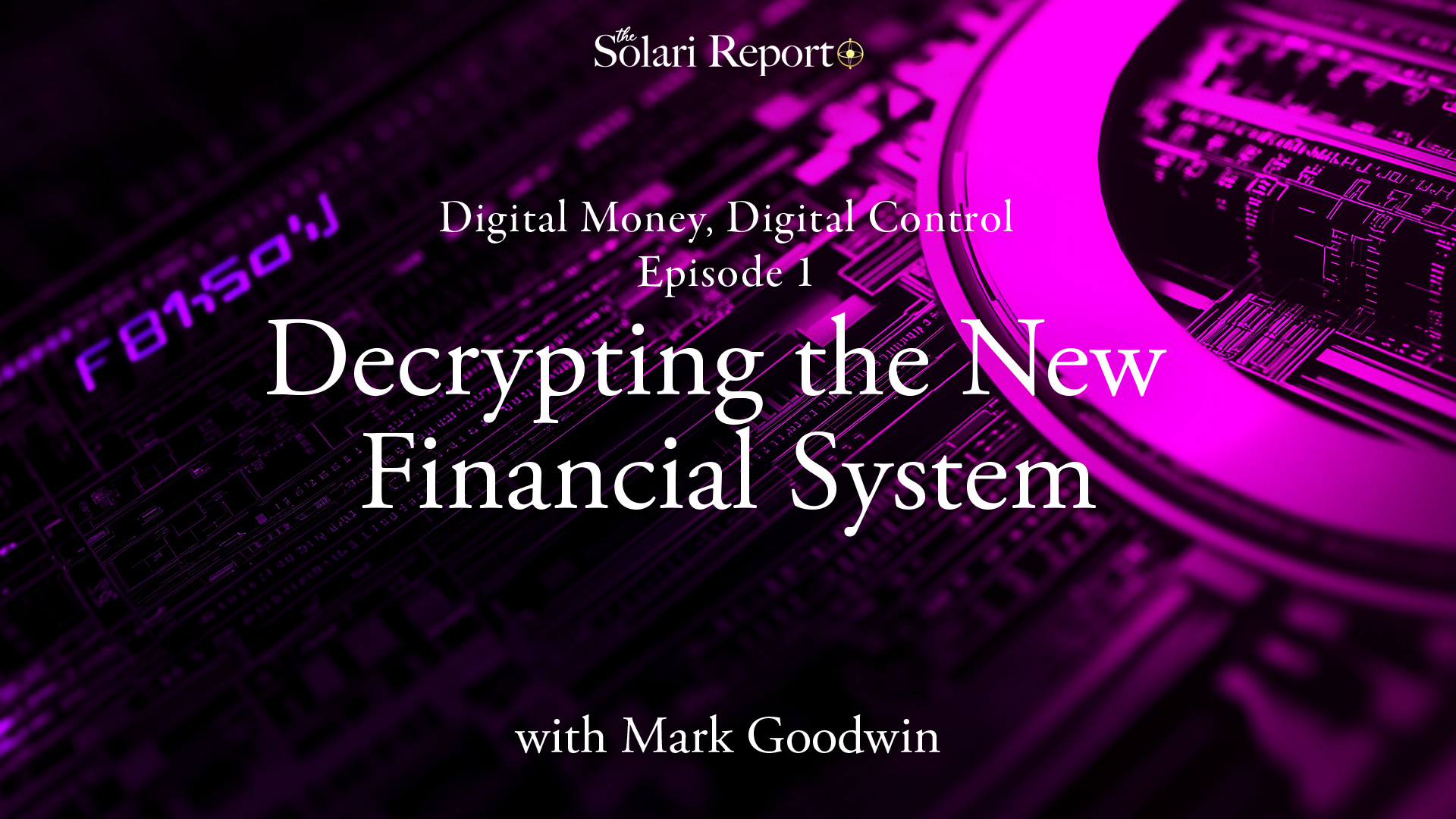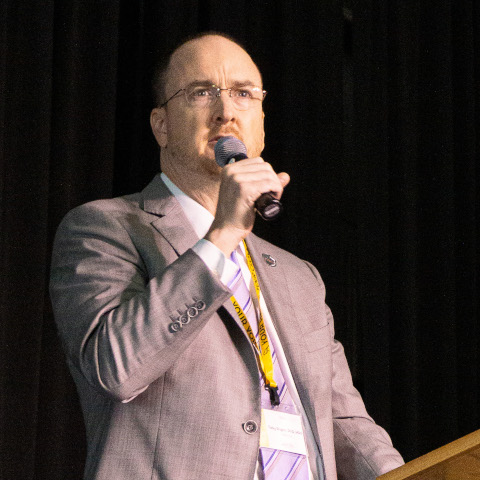A Short Preview:
“You’re seeing a plan for basically how to financialize and make money
out of genocide and the destruction of society.”
~ Professor Michael Hudson

Already a subscriber? Log in
New to the Solari Report? Check out our Welcome Page
Not a subscriber yet? Subscribe now
With a Solari Report subscription, you get access to:
- ✔ The popular and informative Money & Markets show co-hosted by Catherine Austin Fitts and John Titus
- ✔ Weekly interviews with top guests, and quarterly deep dives into major trends affecting you day-to-day
- ✔ Aggregation of the most relevant news stories
- ✔ Subscriber-only events and a digital platform to connect with other subscribers





To add to my comment, here is a quote from the article: “Although there were those who criticised the opening of the Bangkok International Financial Facility in 1993 as opening the channel for capital inflows, the ideas embodied in financial liberalisation were mainstream thinking that pervaded both regionally and the Washington Consensus thinking from the IMF and the World Bank”
I have worked for a Thai bank since 1999 and am very interested in the discussion about the financial crisis here. More than half of the major companies defaulted on their debts but fortunately after the crisis there wasn’t a fire sale of assets as the commercial banks and central bank worked together to keep companies afloat. There were new people running the central bank by that time. I checked to see who was the governor who put in place the disastrous policies mentioned. He was Vijit, Yale educated…surprise. He did come in for criticism for these Western inspired actions and their have been efforts to be more independent since. This article gives a bit of a summary
https://m.phnompenhpost.com/international/vijit-supinit-banker-behind-thailands-boom-years
This is good to know Bronwen. So appreciate your insights.
Best interview I’ve ever seen on Solari.
Always helps to look at history through the prism of “how the money worked.”
This is truly an outstanding presentation. I have recently finished reading Princes of the Yen and it is the first economics book I have read that is so well written it hasn’t made my head physically hurt.
In the UK we have a movement called Stand in the Park. I would very much like your permission to share this presentation with my local and regional Stand in the Park members.
Richard is trying to create a community bank in the UK and I think this presentation would raise awareness of what he is trying to do and hopefully might help to raise enough money for him to get past the UK regulators who are trying to stop him.
OK to do. Everyone, ok to share with close families and friends in groups trying to do something. Please encourage them to subscribe to the Solari Report.
Thankyou Catherine, I really appreciate that. I always encourage people to subscribe to Solari as I think it is truly exceptional in the quality and breadth of information that it offers.
Coincidentally, this story just appeared Tuesday in the popular architecture/design blog Dezeen. Seems like this is all out in the open now:
“Proposals for Gaza 2035 redevelopment revealed online
A document published online reportedly shows Israeli prime minister Benjamin Netanyahu’s plans to redevelop Gaza following the ongoing conflict that has seen the majority of buildings in the region damaged by Israeli strikes.”
The article contains a lot of links to the research, the plan, etc. Incredible.
Here is my translation/expectation – basically overlaying the typical patterns of a HUD neighborhood gentrification and the shock doctrine type historical land grabs.
THE GREAT GAZA TAKE
1. Phase I:
We use US taxpayers money and funds borrowed from their pension funds and Israeli soldiers to clear the land and move the people to other countries or heaven.
Cost to Private Syndicate – 0 costs; profits to various private companies
II. Phase II
We allocate and transfer ownership of the land to private parties – they purchase at low or zero cost.
We ensure complete control and access to gas fields and land we need to organize exploration, treatment and transportation
III. Phase III
We declare that the destruction is terrible and market the importance of helping people fix Gaza to win popular support for the government grants and spending to finance our “humanitarian fix”
We use US taxpayers money and funds borrowed from their pension funds and Israel civil servants and contractors to build new infrastructure
The new private owners build at much lower cost thanks to the various grants and government subsidies and financings
Various global governments provide long term leases to support real estate
Big international banks have their community programs make token grants that get huge press play
IV. Phase IV: 2035 Development Celebrates Success
As project comes to fruition, capital gains on land and real estate in the 1,000’s of percent.
Profits on gas depend on what kind of discount Europe gets for supporting the plan.
Lots and lot of photo opportunities celebrating the humanitarian generosity of the organizers.
Prizes awarded: Nobel prizes, pulitizer prizes, awards at Cannes for the documentary about the great success – the better the discounts on the gas, the more the prizes
Large owners get together for private dinners and compare notes on how stupid the taxpayers and pension funds managers are.
Sigrid Kaag, the former Minister for Foreign Affairs, has been appointed to coordinate phases 2 and 3.
https://news.un.org/en/story/2024/04/1148956
OUTSTANDING interview! As a humanities guy whose brain struggles with numbers, this was the backdoor through which I could consolidate all I’ve been learning from Catherine and the content introduced to me through Solari.
Thank you, Catherine and Richard!
My dream interview would now be to hear (highly influential theologian) N.T. Wright interacting with Richard Werner’s grasp of central banking’s role in global injustices throughout history.
Wright’s latest book, “Jesus and the Powers,” tracks so closely with CAF’s and Werner’s insistence that we must not only resist, but offer the world a better alternative. Wright’s understanding of the (earthly half of the) problem is morally and scripturally on-target, but not nearly as informed as Werner’s and Fitts’.
Great minds need to meet!
James:
Thanks, will take a look,
Catherine
Catherine, what a great interview with Richard Werner (I watched his documentation “Princess of the Yen”) ! Thank you for that.
Few questions:
I believe the logical explanation for what is happening is that the Earth is an open economy and the dividends are required by whomever controls -the material existence whether in the inner planet or in outer space.
If you have not read, you might find this of interest:
https://home.solari.com/book-review-a-history-of-central-banking/
I have ordered this book and am looking forward to reading it.
Hey Catherine, do you have any resources where we can learn more about this? I’ll check out the book. Thank you!
As a side note, the back cover of the book “Lord Milner’s Second War” has this :
“After his first war, Lord Milner set his sights on a Great War to eliminate European opposition to the hegemony of his Anglo American Banking cartel.”
Strangely, though, the book has no mention of anything on this subject in the text.
I just love this interview: Richard Werner on the financial sector, added/extracted value, money “creation”, “deposits”, productivity and solutions. Simply explained.
Yes a great one. Richard proves that when you really understand something and you truly want others to, it is easy to teach finance and economics.
Prof Werner is a star. …..
And the hardest of hardball played by the ECB. First of all the Irish government was persuaded to underwrite their banks loans (German local banks via Dublin Banks to US subprime) then there was a revolt ….
https://web.archive.org/web/20240529125020/https://www.independent.ie/irish-news/banking-inquiry-mcgrath-calls-on-trichet-to-respond-to-a-bomb-would-go-off-comment-claims/31521856.html